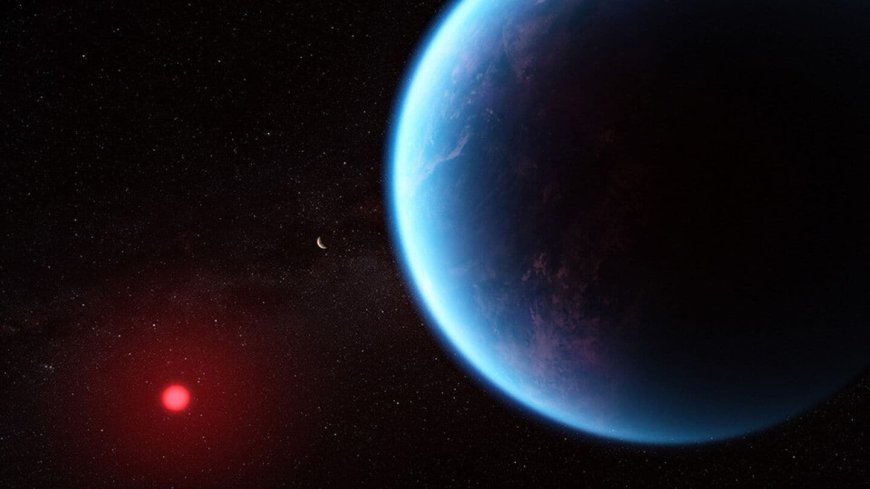Water-Rich Planet Discovered 124 Light-Years Away
Scientists confirm the presence of water on K2-18b, a sub-Neptune-sized planet orbiting a red dwarf star. Recent data analysis rules out previous findings of dimethyl sulfide and dimethyl disulfide, providing insights into the planet's structure and atmosphere. The planet's water-rich interior and the absence of certain elements raise questions about its composition.

K2-18b, a sub-Neptune-sized planet orbiting a red dwarf star 124 light-years away, has been the subject of intense scientific debate. Cambridge scientists had previously reported signs of dimethyl sulfide (DMS) and dimethyl disulfide (DMDS) in its atmosphere using data from the James Webb Space Telescope (JWST). These molecules are typically associated with biological activity on Earth. However, several research teams later disputed these findings after analyzing the same data independently. Scientists now claim this planet has water on its surface.
Atmospheric analysis Hubble and JWST data hinted at a hydrogen-rich atmosphere The initial observations of K2-18b provided clues about its atmospheric composition. The planet was found to have a hydrogen-rich atmosphere, with traces of methane and possibly CO2. There were hints of ammonia and water vapor, but more observations were needed for a clearer picture. The scientists who debated DMS and DMDS were also keen to know if future data would show possible signatures for these molecules.
Structural insights New study rules out DMS, DMDS Now, a group of scientists has analyzed new data from four recent JWST near-infrared transit observations, and combined them with earlier JWST and Hubble data. Their research, posted to the arXiv preprint server, shows no signs of DMS or DMDS but provides a clearer picture of K2-18b's structure. The study confirms that K2-18b is a water-rich planet with strong evidence for methane and CO2 in its atmosphere.
Atmospheric speculation Planet has water-rich interior The presence of methane and CO2 at observed abundances on K2-18b could indicate either a thick atmosphere with 100 times solar metallicity and 10-25% by volume of bulk H2O, or a thin atmosphere overlying a liquid-water ocean. \"Regardless of whether the planet hosts a liquid-water ocean, our results conclusively demonstrate that K2-18b has a water-rich interior,\" the researchers said.
Elemental absence What about ammonia and water vapor? Ammonia and carbon monoxide were missing from K2-18b's atmosphere. The researchers said that the lack of ammonia is consistent with a liquid ocean but not definitive. More observations are required to get useful information about the CO2 to CO ratio. The results also suggest that the absence of atmospheric water vapor could indicate a cold trap, possibly due to water vapor condensing before reaching their instruments' altitudes.
According to the source: NewsBytes.
What's Your Reaction?
 Like
0
Like
0
 Dislike
0
Dislike
0
 Love
0
Love
0
 Funny
0
Funny
0
 Angry
0
Angry
0
 Sad
0
Sad
0
 Wow
0
Wow
0






















































































































































































